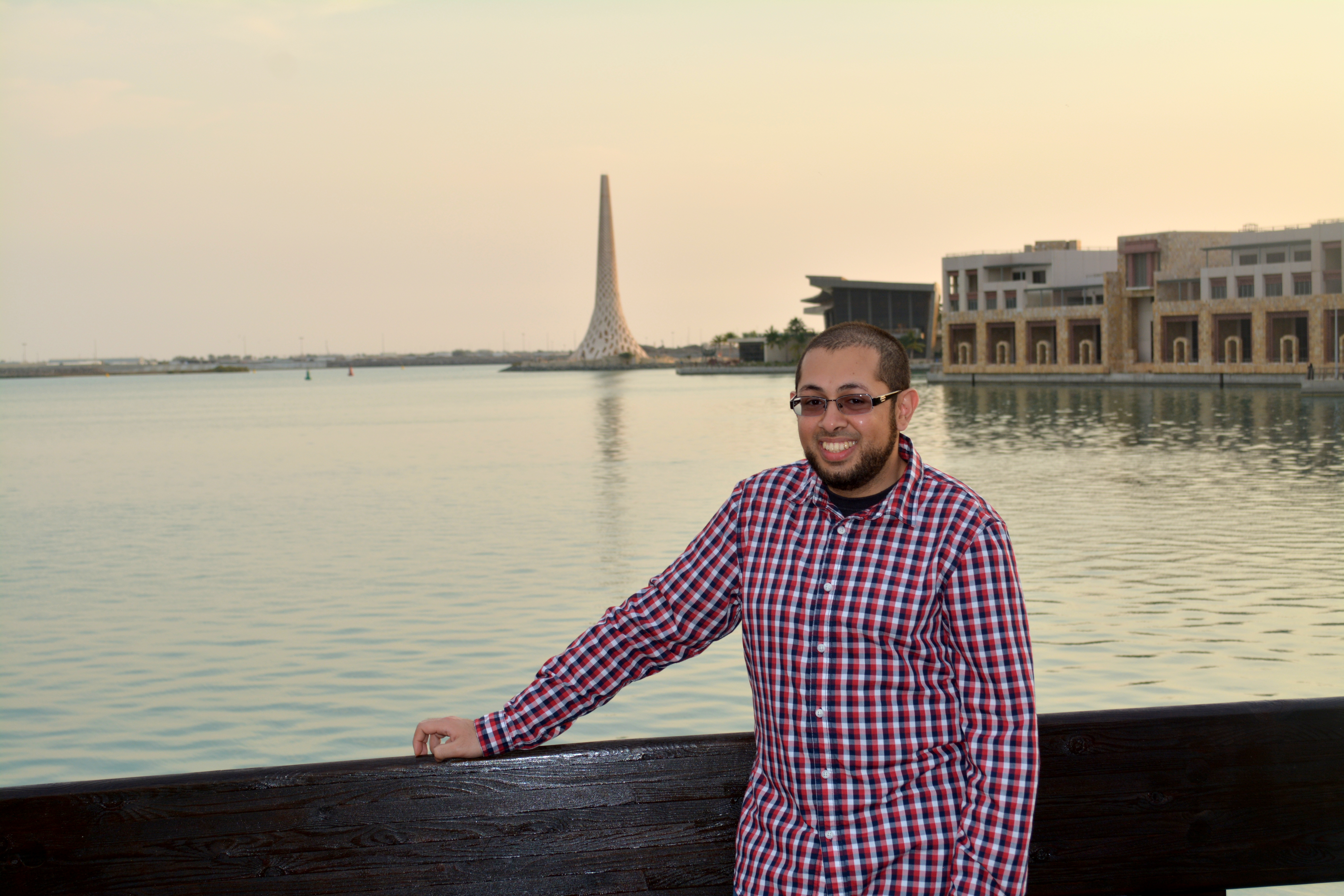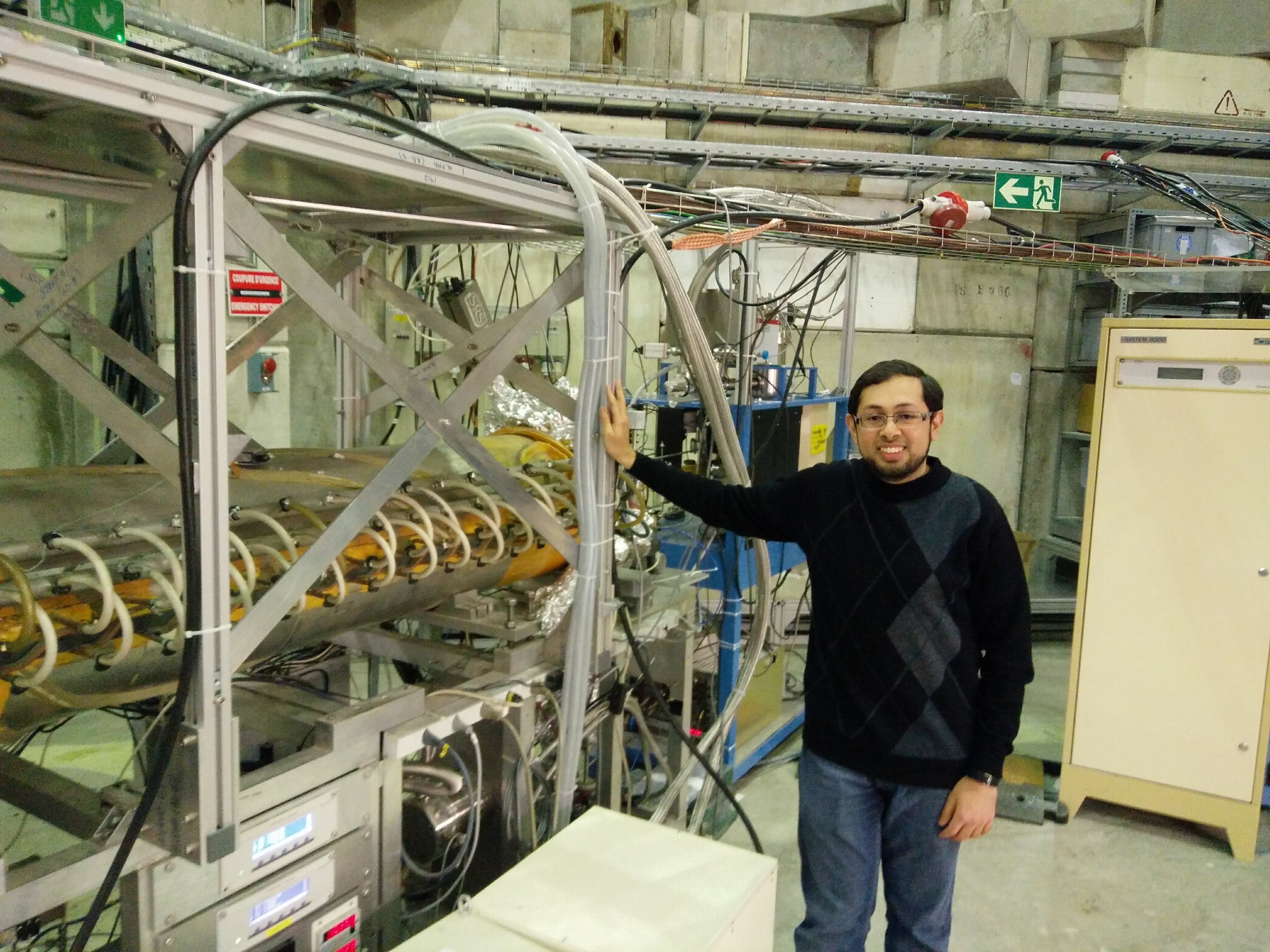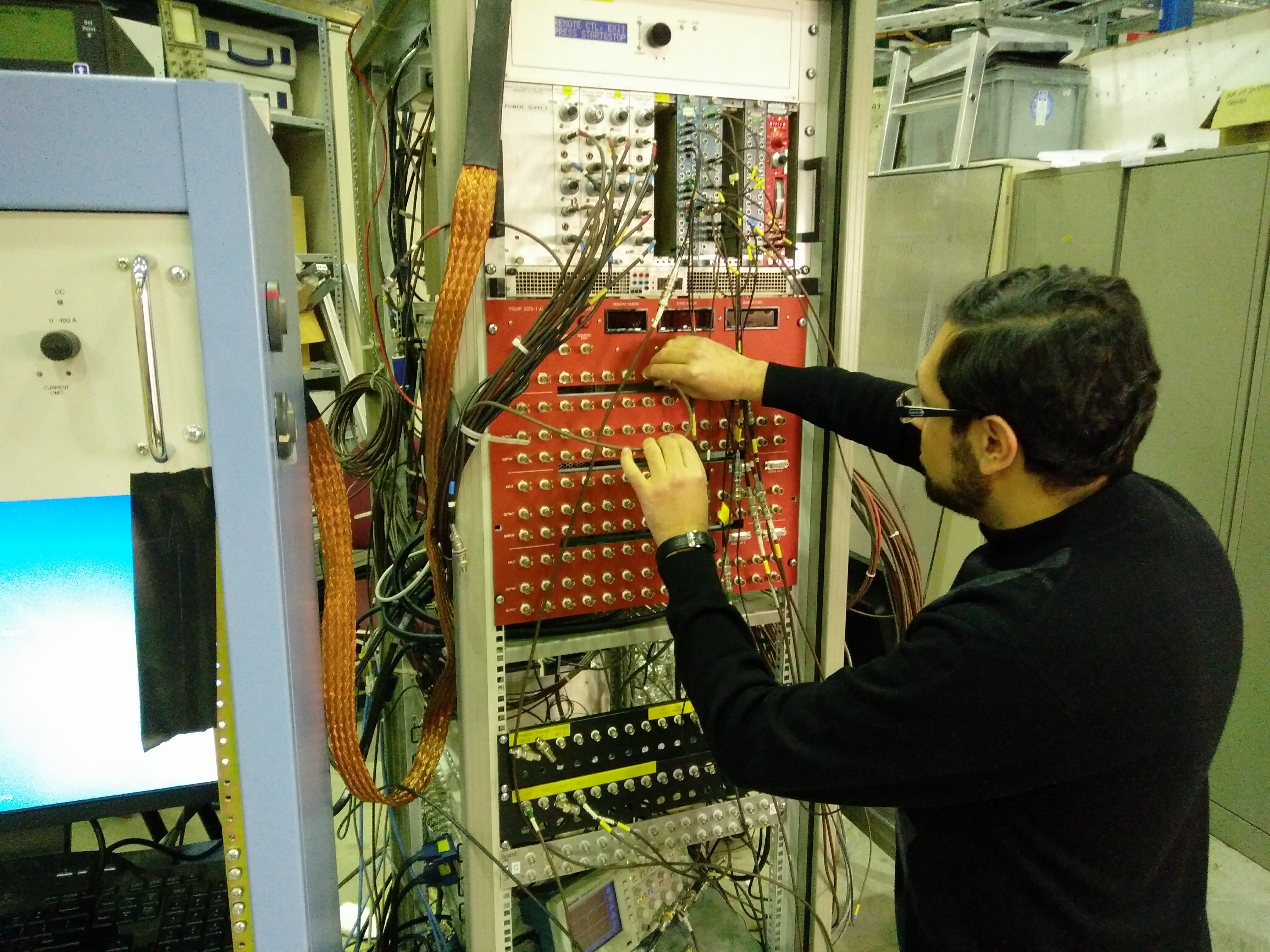Fourth Nature appearance for former KAUST student

Muhammed Sameed, a 2012 KAUST master's degree alumnus currently working at CERN in Switzerland, co-authored a paper recently published in Nature focusing on antimatter. Photo by Usman Amin Fiaz.
-By David Murphy, KAUST News
Muhammed Sameed, a KAUST material science and engineering master's degree graduate (2012), recently co-authored a paper focusing on antimatter spectroscopy that was published in Nature entitled "Characterization of the 1S–2S transition in antihydrogen." Sameed is currently working as a research scientist at The European Organization for Nuclear Research (CERN), in Geneva, Switzerland. As part of CERN's ALPHA experiment, he creates "exotic antimatter particles" in the laboratory and studies their properties.
His current research focus is working on building a new instrument called ALPHA-g, which will be used to measure antimatter gravity. The idea of the ALPHA-g instrument is to create atoms of antimatter inside of the device and then let them fall. As the antimatter falls and obliterates, it will tell the researchers how strongly antimatter interacts with Earth's gravitational field.

Muhammed Sameed (M.S. '12) currently works at CERN in Switzerland and recently co-authored a paper published in Nature focusing on antimatter. Photo by Mark Andrew Johnson.
"Our results show that for this particular transition, hydrogen and antihydrogen are similar to an extremely high degree. In the future, we want to make even more precise measurements to find out at what level do these atoms start to show any differences," Sameed noted.
A pivotal role in an academic journey
Sameed credits his current successes to the pivotal role that KAUST played in his academic development. During his time at KAUST, he overcame initial problems engaging with his course, but then went on to develop an expansive cross-disciplinary curriculum.
"I came to KAUST with a background in physics and mathematics, and I initially found it difficult to engage with the engineering courses I was enrolled in. However, thanks to the encouragement from my professors and the flexibility of the Physical Science and Engineering Division, I was able to formulate a cross-disciplinary curriculum that was suitable for my research interest," he said.

Muhammed Sameed (M.S. '12) works in the lab at CERN in Switzerland. He and his colleagues recently authored a paper published in Nature focusing on antimatter. Photo by Mark Andrew Johnson.
Sameed credits his latest appearance as a testament to the excellent research team he is part of at CERN.
"I feel extremely lucky to be part of a team that is scientifically brilliant and extremely hardworking and a team that is always pushing me to exceed my limits and produce such excellent work. The excitement of a Nature acceptance never goes away and is worth a celebration every single time," he noted.
Related stories:
- Former KAUST student featured in Nature
- Alumni Focus: Muhammed Sameed
-
WEP 2015 Alumni Lecture Series

